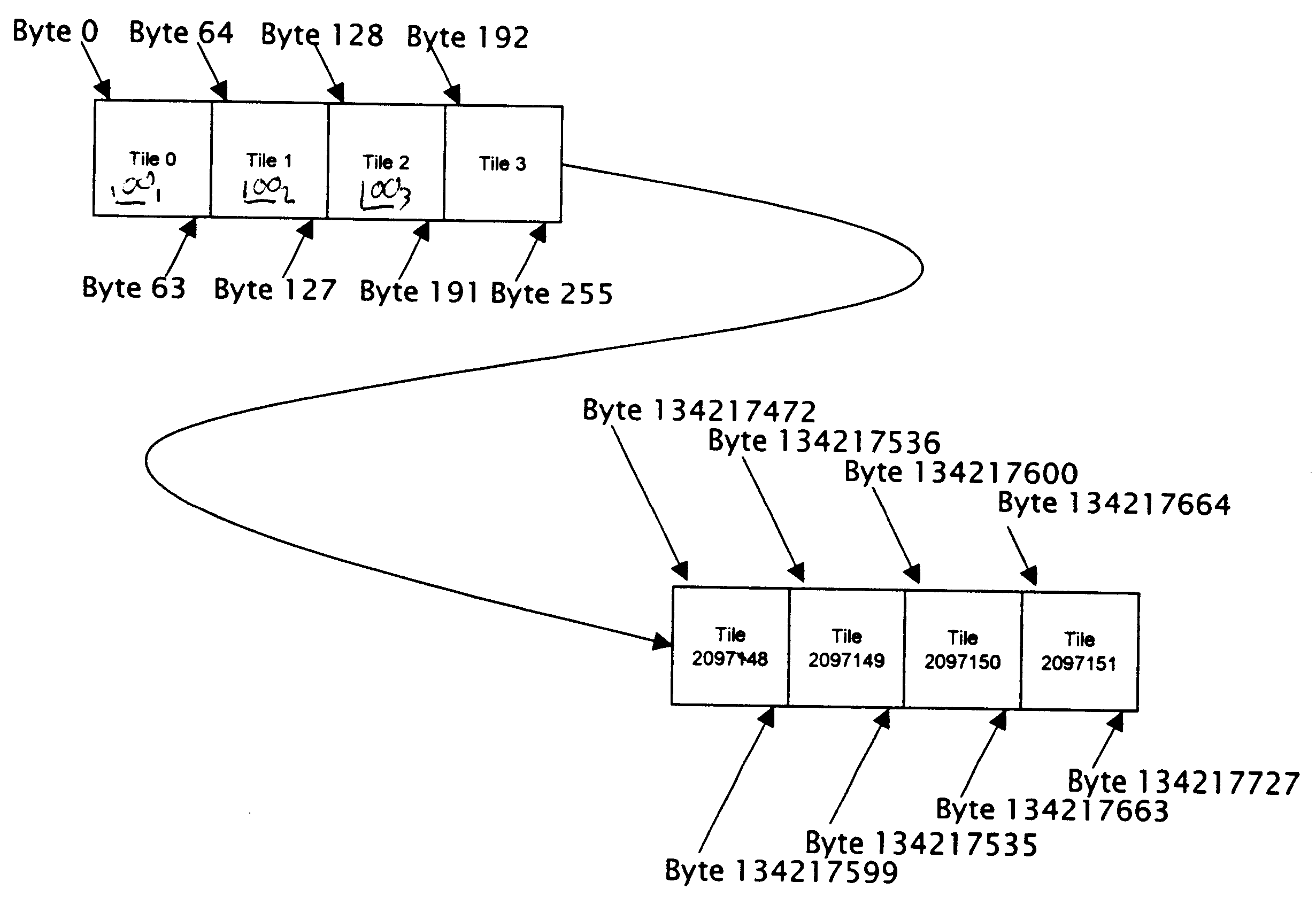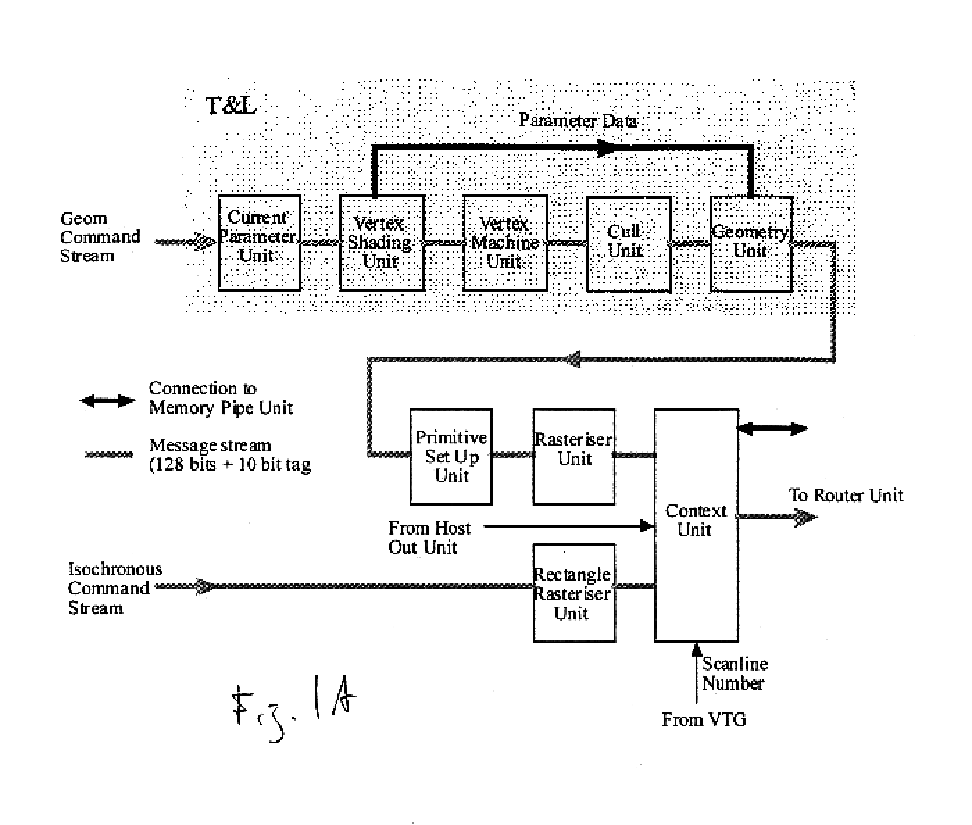Planar byte memory organization with linear access
a memory organization and linear access technology, applied in the field of planar byte memory organization, can solve the problem of a number of places being liable for costs
- Summary
- Abstract
- Description
- Claims
- Application Information
AI Technical Summary
Benefits of technology
Problems solved by technology
Method used
Image
Examples
Embodiment Construction
The numerous innovative teachings of the present application will be described with particular reference to the presently preferred embodiment (by way of example, and not of limitation).
The present application discloses an improvement on a graphics memory architecture which is oriented in a tiled format. (In the preferred system example, memory is organized as 8 byte by 8 byte tiles that are stacked through memory; and data is accessed by tile number instead of by byte position.)
FIG. 1 shows how the memory system is preferably organized as 8 byte by 8 byte tiles 100 that are stacked through memory. Instead of addressing by byte position, data is accessed by tile number.
Normally, each tile corresponds to a region of a buffer (perhaps the framebuffer or a texture). If the data type held in the buffer needs more than one byte per entry, the bytes are preferably held in separate tiles. (Thus this organization may be described as a “byte planar” format. FIG. 2 shows a 1024×768 screen at ...
PUM
 Login to View More
Login to View More Abstract
Description
Claims
Application Information
 Login to View More
Login to View More - R&D
- Intellectual Property
- Life Sciences
- Materials
- Tech Scout
- Unparalleled Data Quality
- Higher Quality Content
- 60% Fewer Hallucinations
Browse by: Latest US Patents, China's latest patents, Technical Efficacy Thesaurus, Application Domain, Technology Topic, Popular Technical Reports.
© 2025 PatSnap. All rights reserved.Legal|Privacy policy|Modern Slavery Act Transparency Statement|Sitemap|About US| Contact US: help@patsnap.com



